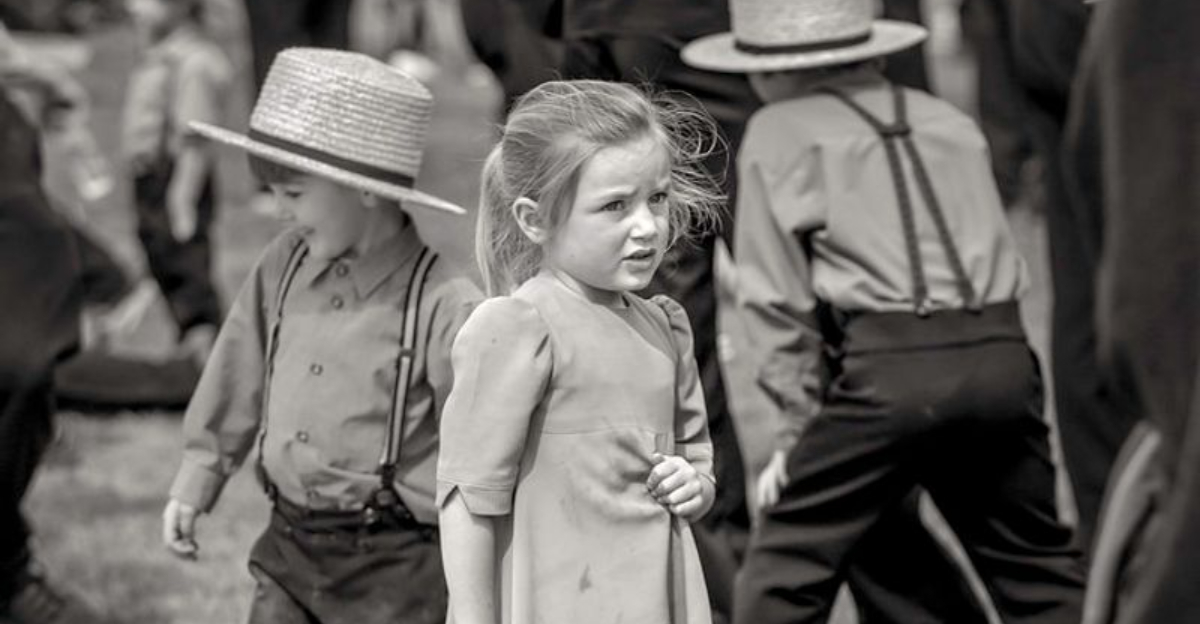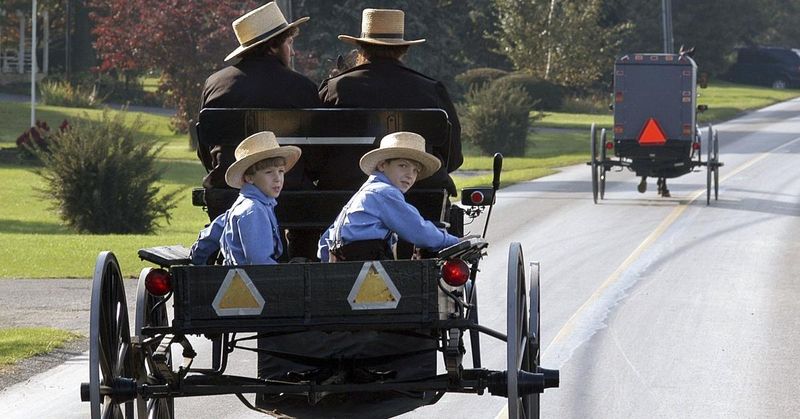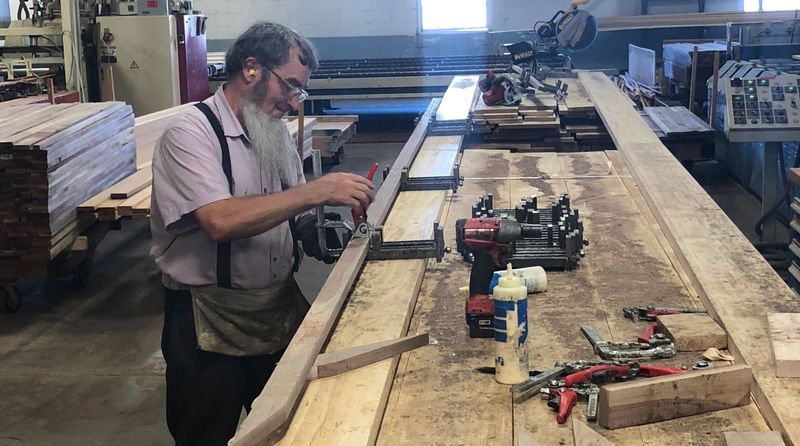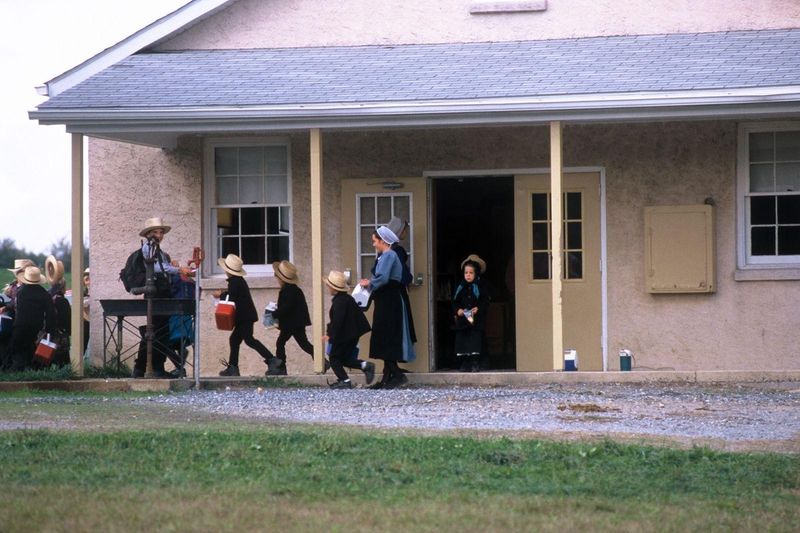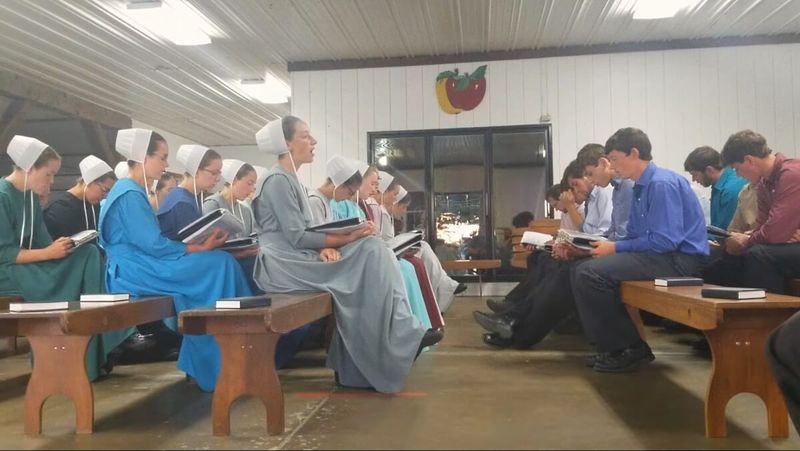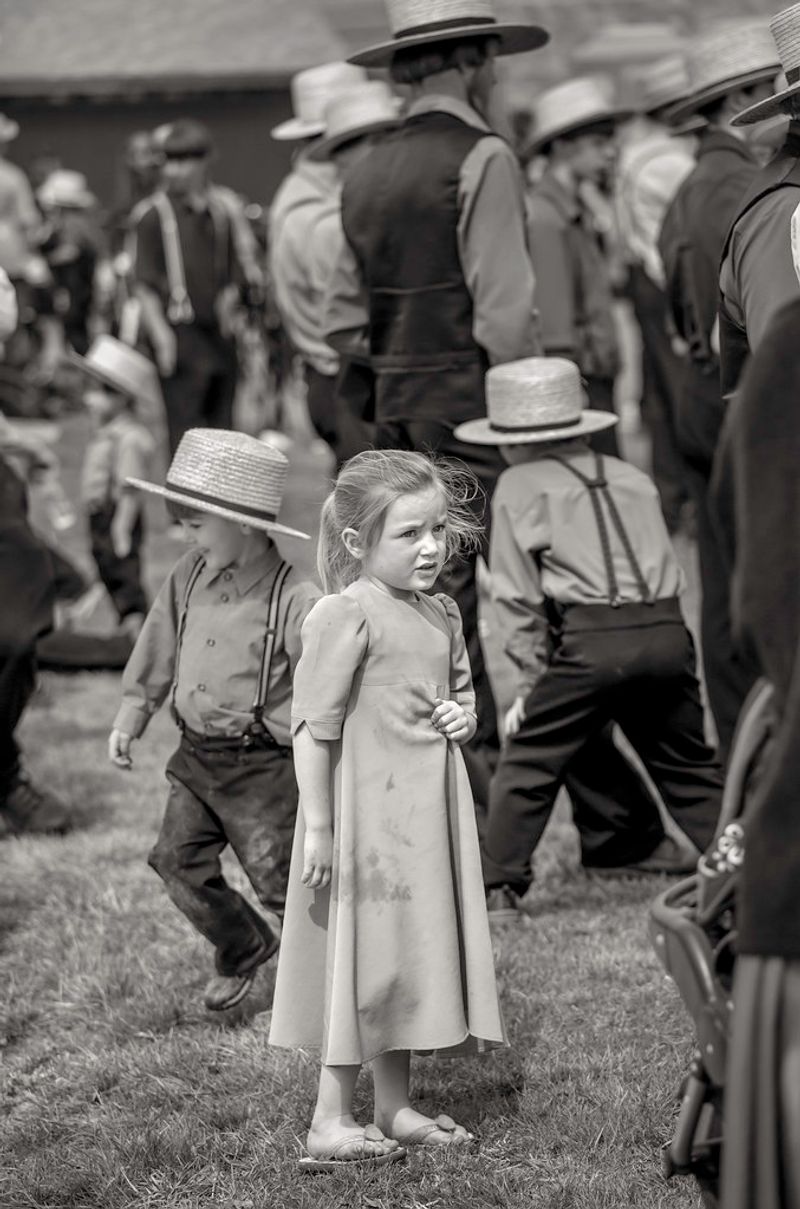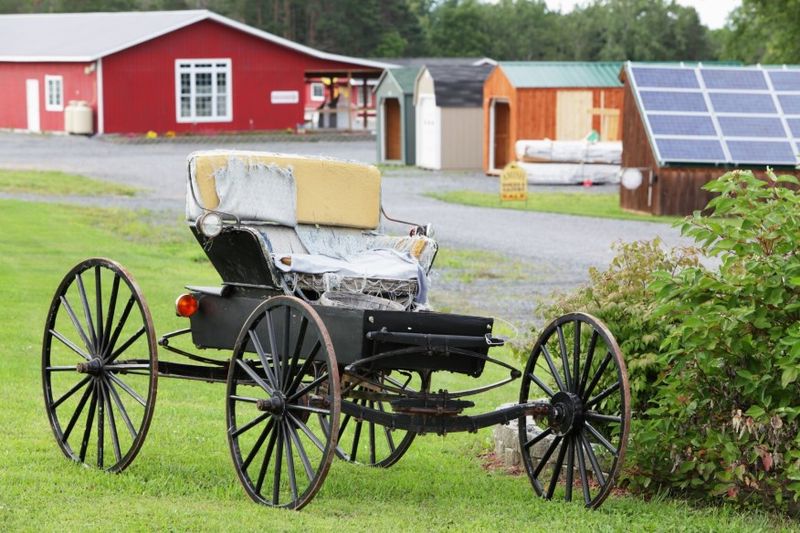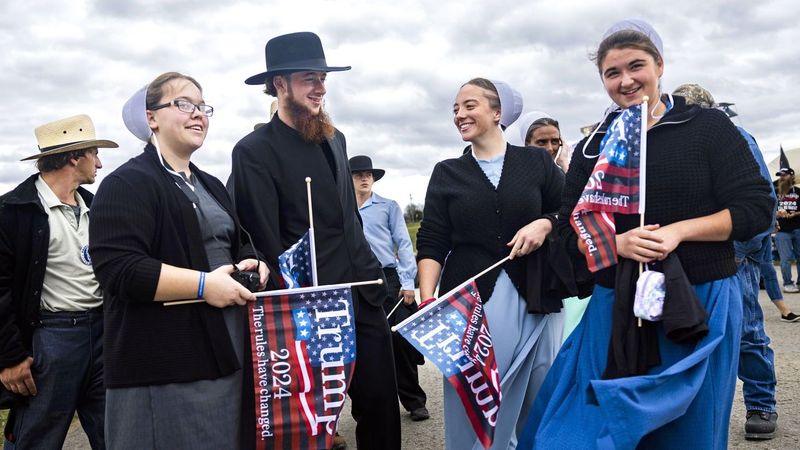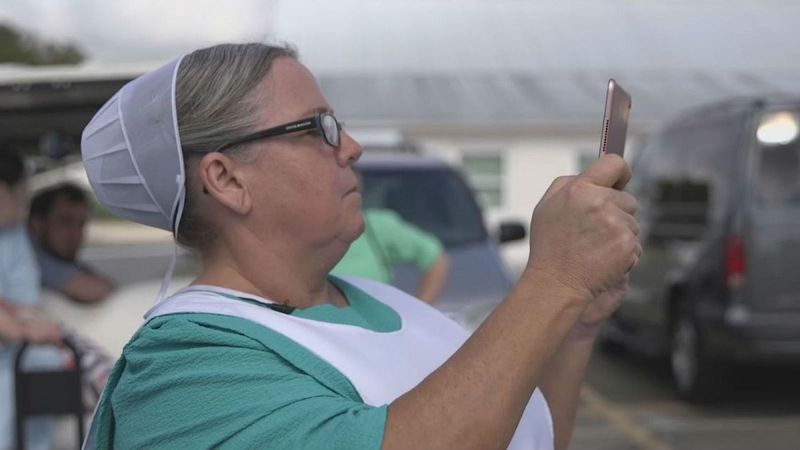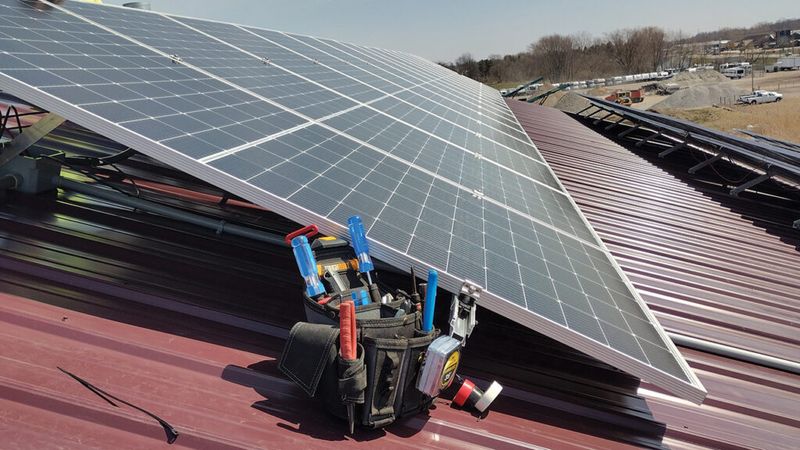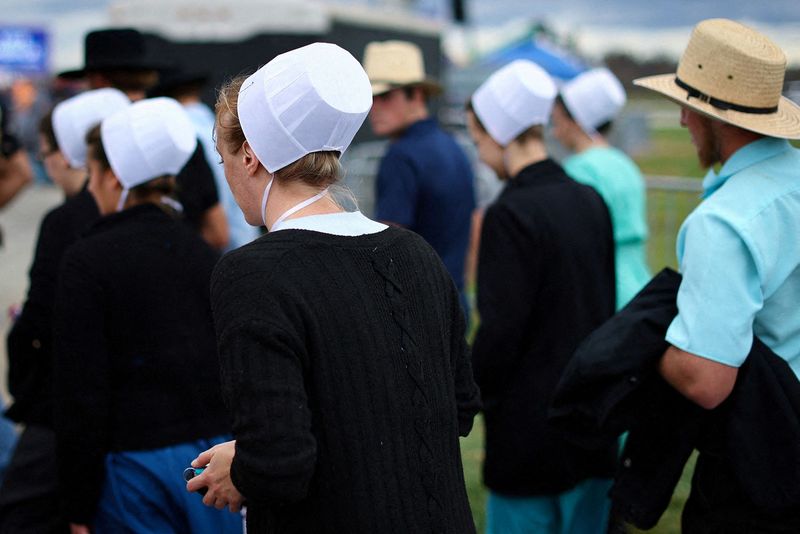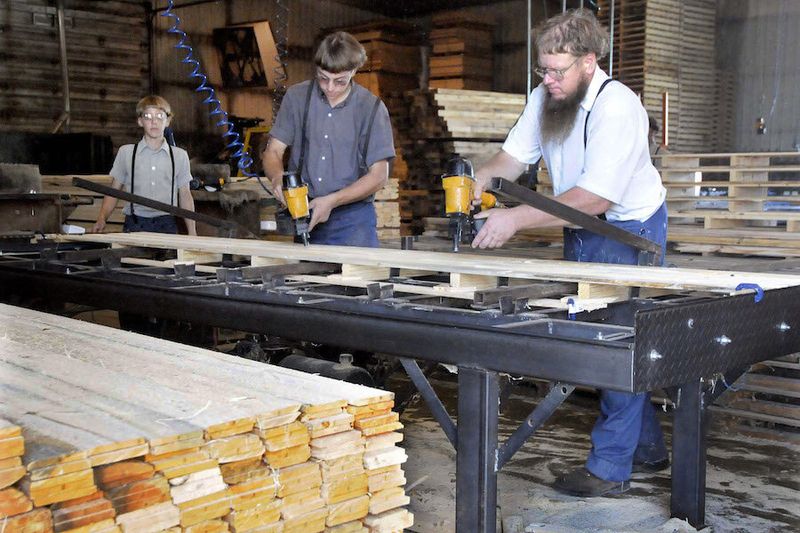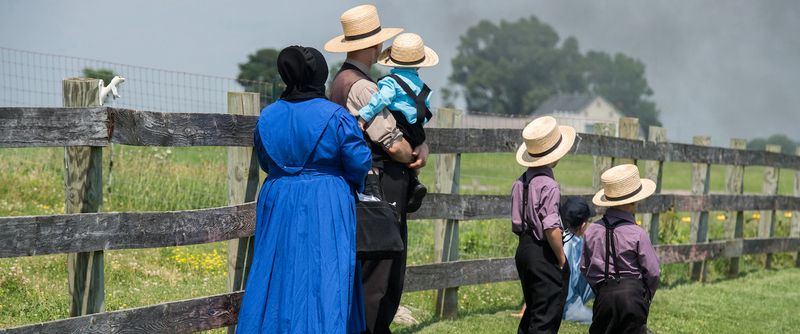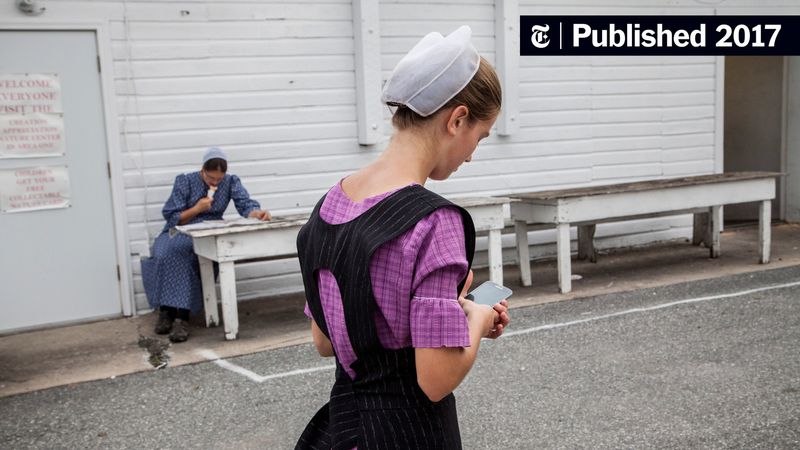The Amish are often seen as a mysterious group, living simple lives away from modern society, but there are many misconceptions about them that persist.
Let’s uncover 20 myths about the Amish you probably still believe, but shouldn’t!
1. They completely reject all technology
Contrary to popular belief, the Amish don’t completely reject technology. While they may shun modern conveniences like electricity from the public grid, they do make use of other forms of technology when it suits their needs.
Many Amish use gas-powered appliances, solar panels, and even cell phones for work-related purposes. For the Amish, the use of technology is carefully considered and varies by community.
Decisions are based on how technology will impact family life and community values. It’s not about rejecting all technology, but rather about choosing what aligns with their principles.
2. They don’t pay taxes
A common myth is that Amish people are exempt from paying taxes. In reality, Amish individuals pay income, property, and sales taxes just like everyone else. They contribute to the economy and are subject to the same tax laws as their non-Amish neighbors.
The mistaken belief likely arises from their exemption from Social Security taxes due to their religious objection to insurance. However, this doesn’t mean they’re free from other taxes.
The Amish are very much a part of the financial fabric of their communities, despite popular misconceptions.
3. They can’t ride in cars
While the Amish don’t own cars, they aren’t forbidden from riding in them. Hiring a driver or riding as a passenger is common, especially for long distances or trips to the hospital.
This myth likely stems from their preference for horse-drawn carriages as a way to maintain a slower, community-focused lifestyle. The choice reflects their commitment to simplicity and intentional living rather than an outright ban on modern transportation.
The Amish make thoughtful choices about technology, balancing tradition with practicality.
4. They only wear black
Although many associate the Amish with black clothing, their wardrobe can be surprisingly colorful. Many Amish communities wear blues, purples, and earth tones, avoiding only flashy or patterned designs.
The choice of clothing is about modesty and uniformity, not about avoiding all colors. Each community may have different guidelines, but black is not the only option. These garments are often handmade, reflecting values of simplicity and craftsmanship.
5. They don’t believe in modern medicine
The notion that the Amish completely reject modern medicine is a misconception. While they often rely on home remedies for minor ailments, they do visit doctors and dentists when necessary.
The Amish prioritize simple living and natural solutions, but they are pragmatic when it comes to healthcare. When faced with serious health issues, they seek professional medical help like anyone else.
The emphasis is on balancing traditional methods with modern medicine, not rejecting one for the other.
6. They’re all farmers
Many people picture the Amish as exclusively farmers, but they engage in a variety of occupations. While agriculture plays a significant role in their communities, many Amish are also carpenters, craftsmen, builders, and small business owners.
Their skills in woodworking and craftsmanship are particularly renowned, contributing to a thriving market for quality, handmade products. The Amish work ethic and dedication to quality are evident in all they do, whether in the fields or in a workshop.
7. They don’t go to school
It’s a myth that Amish children don’t attend school. They do, but their education is different from the mainstream system. Amish children typically attend school through the eighth grade, often in one-room schoolhouses within their communities.
The focus is on practical skills and preparing children for the roles they’ll assume as adults, whether in farming or other trades. This tailored approach to education reflects their values of simplicity, practicality, and community-based learning.
Education is seen as a way to instill essential life skills, not just academic knowledge.
8. They’re all the same
Many believe the Amish are a homogenous group, but this couldn’t be further from the truth. There are dozens of Amish groups, each with their own rules, lifestyle, and beliefs. From the Old Order to the New Order, each community has unique practices.
These differences can be seen in everything from clothing styles to the use of technology. The diversity among Amish groups is a testament to their adaptability and the importance they place on community autonomy and tradition.
9. They can’t be photographed
The idea that the Amish cannot be photographed is a common misunderstanding. While posed portraits are typically avoided due to beliefs about vanity and humility, candid or respectful photography is often tolerated.
The distinction lies in the intent and respect shown to the subjects. Many Amish people understand the curiosity about their way of life and are willing to share it, provided it aligns with their values.
Photography, when done respectfully, can be a bridge between cultures.
10. They live totally off the grid
While many Amish homes are off the electrical grid, the notion that they are completely isolated from modern society is a myth. Their communities frequently interact with the modern world for trade, work, and essential services.
The Amish adopt technologies like solar panels and wind turbines to maintain their lifestyle while being mindful of their environmental impact. This adoption showcases their ingenuity and adaptability, balancing tradition with modernization in thoughtful ways.
11. They don’t vote or participate in politics
The belief that the Amish are completely disengaged from politics isn’t entirely accurate. While they may be less involved in national issues, some Amish do vote, especially in local elections that directly affect their communities.
Their participation is guided by community consensus and religious beliefs, focusing on issues of immediate importance. The Amish value harmony and simplicity in their political involvement, often prioritizing local over national matters.
12. They practice polygamy
Polygamy is not practiced among the Amish; their marriages are strictly monogamous. The commitment to a single partner is a core aspect of Amish values, emphasizing lifelong dedication and family stability.
This myth likely arises from confusion with other religious groups. Amish weddings are community events, celebrating the union with minimal pomp and maximum sincerity. Monogamy is cherished as a reflection of their faith and community-focused living.
13. They’re stuck in the 1800s
The idea that the Amish are stuck in the 1800s is a simplification. While they avoid fleeting trends, the Amish do adapt slowly and intentionally, utilizing technologies like flip phones and solar power.
Their evolution is about maintaining core values while adopting useful innovations that don’t disrupt their way of life. This thoughtful adaptation ensures that they preserve their culture while engaging with the modern world in meaningful ways.
Change is gradual, reflecting deep consideration of its impact.
14. They don’t use electricity at all
The notion that the Amish completely avoid electricity is misleading. While they typically avoid public grid electricity, many use alternatives like batteries, propane, or pneumatic tools.
These choices are about maintaining a lifestyle that prioritizes community cohesion and sustainability.
By using controlled electricity sources, the Amish demonstrate their commitment to simplicity and environmental stewardship, showing that their approach is one of selective adoption, not wholesale rejection.
15. Rumspringa means total rebellion
Rumspringa is often misunderstood as a period of total rebellion. While it does provide Amish teenagers the chance to explore the outside world, many remain conservative during this time.
Rumspringa is a period of reflection and decision-making, allowing young Amish to affirm their faith and community membership.
The freedom offered is not about wild abandon but about making thoughtful choices that align with personal beliefs and community values.
16. They don’t own businesses
The idea that the Amish don’t own businesses is far from the truth. Many Amish-run businesses are thriving, especially in industries like woodworking, furniture making, and food production.
These businesses reflect the Amish dedication to quality and craftsmanship, offering handmade goods that attract both local and international customers.
Business ownership allows the Amish to maintain their lifestyle, providing economic stability and community support without relying on outside employment.
17. They never leave their communities
While it’s rare, some Amish do leave their communities to assimilate into modern society. This decision is deeply personal and often involves significant contemplation and emotional struggle.
For those who leave, adapting to a new world comes with challenges and opportunities for personal growth.
The choice to leave reflects individual aspirations and the pursuit of a different life path, showing that personal autonomy is respected, even in close-knit communities.
18. They speak only English
It’s a myth that the Amish speak only English. Most Amish are bilingual, speaking Pennsylvania Dutch – a German dialect – and English for interaction with the outside world.
This linguistic duality maintains cultural heritage while facilitating communication beyond their communities. Language plays a significant role in cultural identity, allowing the Amish to preserve their traditions while engaging with broader society.
19. They don’t use money
The belief that the Amish don’t use money is another myth. In fact, cash is king in Amish communities, where they prefer it over credit and digital transactions. This preference for cash aligns with their values of simplicity and avoiding debt.
Money is an essential part of their economic interactions, supporting the community’s self-sufficiency and independence from modern financial systems. The use of cash reflects their commitment to straightforward and honest dealings.
20. They’re completely cut off from the modern world
The Amish are more integrated with the modern world than many realize. They balance tradition with selective modernization, engaging with the outside world for trade, work, and essential services.
This interaction allows them to maintain a sustainable lifestyle while preserving core values. By choosing what aspects of modernity to incorporate, the Amish demonstrate a nuanced approach to change, ensuring their community thrives while keeping its cultural identity intact.
